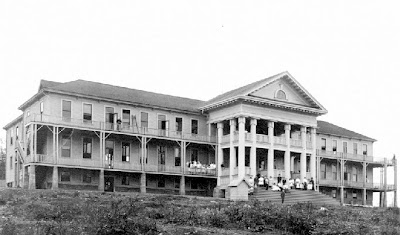 We've just passed the six month mark with the Royal BC Museum blog! Dipping our toes in the sea of social media, we've tried to make the blog into a window on the life of our museum. As part of the blogging team, I know I've had fun reading and writing about everything from Captain Cook to the history of our Mammoth.
We've just passed the six month mark with the Royal BC Museum blog! Dipping our toes in the sea of social media, we've tried to make the blog into a window on the life of our museum. As part of the blogging team, I know I've had fun reading and writing about everything from Captain Cook to the history of our Mammoth.While we're not the biggest bloggers in town, we're happy with how things have gone. The point of social media, for us, is to engage you in our work and play. We want you to comment on what we've said, tell a friend about what you've learned, or think about how you can be a part of what we do. Social media makes reaching out like this easier than ever before.
What about other museums? Want to learn more about social media and museums?
A good starting point is the fabulous blog by Nina Simon. Her posts on social media and museums are always fascinating. If you want to hear Nina in person, she'll be the keynote speaker at the upcoming British Columbia Museums Association conference. Another interesting conference is the annual Museums and the Web - they also publish all of their papers and presentations online. It can be a little academic, but provides a great snapshot of the "state of the art" in the museum world.
 Finally, check out a recent online event that was probably the biggest example of social media engagement by museums around the world. Ask a Curator Day was held on September 1st, 2010. On that day, 340 museums made their curators available to answer any questions asked by the public via Twitter. It was, by all accounts, a huge success. If it happens next year, perhaps we can join in that conversation, too!
Finally, check out a recent online event that was probably the biggest example of social media engagement by museums around the world. Ask a Curator Day was held on September 1st, 2010. On that day, 340 museums made their curators available to answer any questions asked by the public via Twitter. It was, by all accounts, a huge success. If it happens next year, perhaps we can join in that conversation, too!














